Drought robs Amazon communities of 'life-giving' river
- Published

Boats sit on sandy soil where a river in Colombia's Amazon region would normally be flowing
Orlando Rufino stands in the bed of the river that he says has been "life-giving" for his people for hundreds of years.
"It's life, because it's what gives us everything," he explains.
A key source of transport, food and income for families like Mr Rufino's, the river has always snaked through dense jungle in southern Colombia, eventually linking up with the mighty Amazon.
But instead of wading through water, his feet sink into dry sand. Wooden boats that normally travel along its steady current sit forgotten next to him.
"Even during droughts, it has always gone up to here," Mr Rufino, 43, says, holding his hand over his head. "Right now, it's critical."
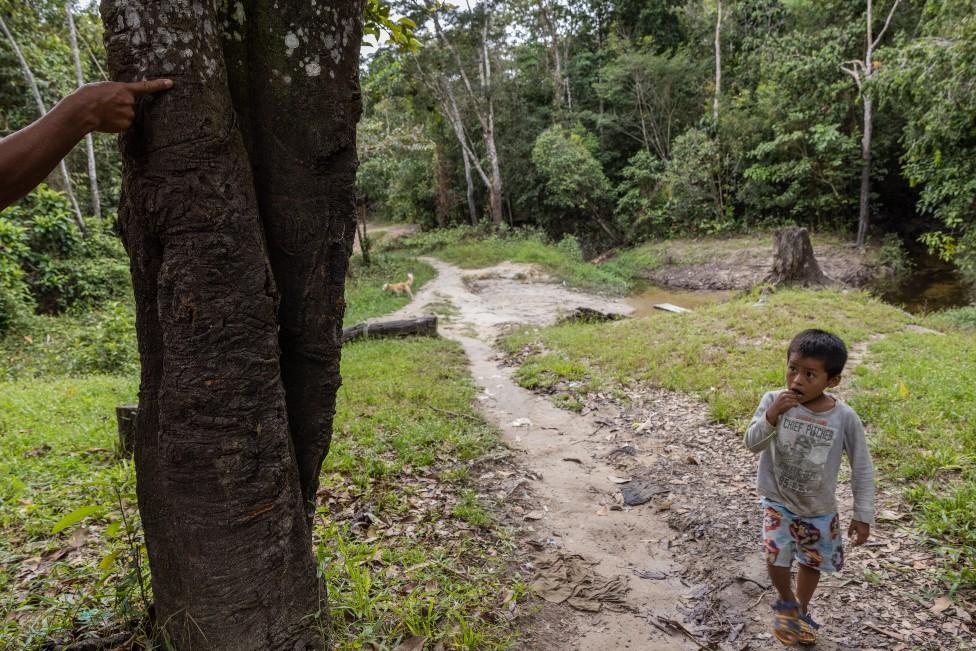
Orlando Rufino points to a tree trunk to show how high the river level would be normally
Historically, the dry season in the region runs from July to December. While the river level goes down during this time, it almost always remains deep enough for boats to travel, Mr Rufino says.
But over the past five years, the droughts have gradually worsened. This year, it has stretched for months longer than normal.
Usually metres deep, right now the river is little more than a trickle.
Such low water levels pose an existential threat to the estimated 30 million people that call the Amazon basin home, including Mr Rufino's indigenous Ticuna people.
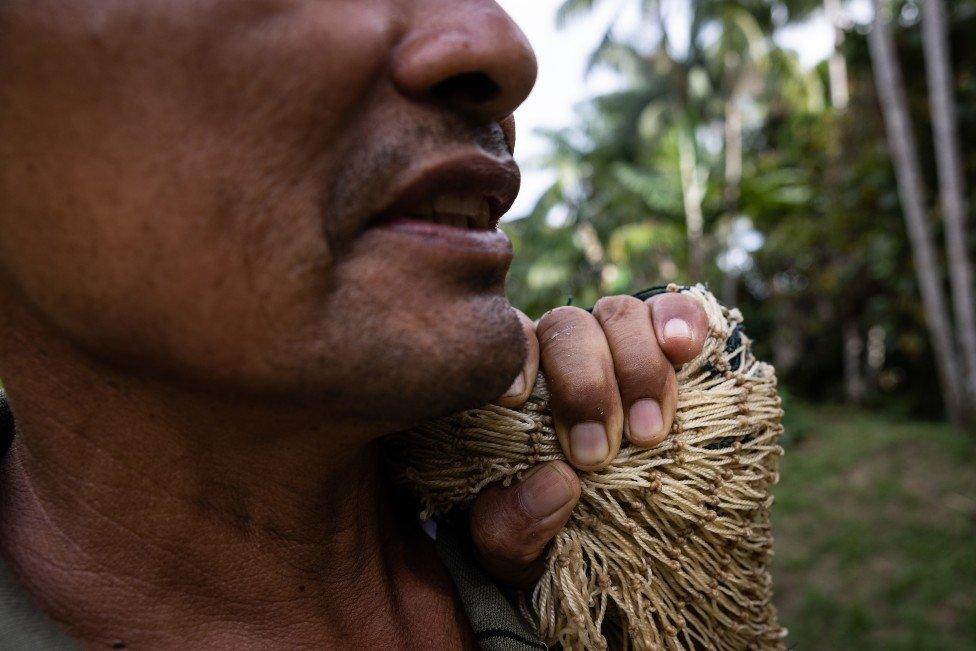
Mr Rufino relies on the river and its fish to feed his family
The director of the Foundation for Conservation and Sustainable Development, Rodrigo Botero, says that climate change is to blame for the increased frequency of the droughts.
"And the ones who suffer are the people with the fewest resources," he adds.
Mr Botero, a scientist working across Colombia's Amazon region, has documented the destruction over the past decades.
Dubbed "the lungs of the planet", the Amazon basin's 6.9 million square kilometres (2.7m sq miles) of rainforest - land more than twice the size of India - has suffered rampant deforestation, which fuels climate change.
Roughly 15% of that forest has been destroyed across Bolivia, Brazil, Colombia, French Guiana, Guyana, Peru, Suriname and Venezuela since 1978, data gathered by the non-profit conservation news platform Mongabay suggests.
"Between deforestation and these massive droughts... local communities face more new problems every day," warns Mr Botero.
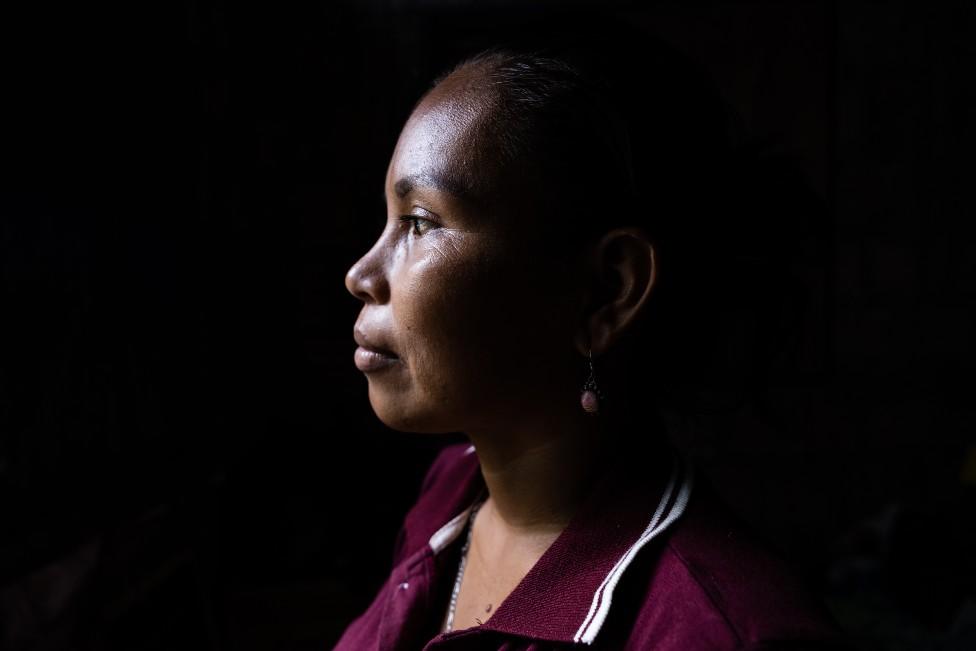
Deisi Sánchez Parente worries about what the future may look like for her children
Deisi Sánchez Parente Bóatakü is one of those affected by the dropping river levels.
The 33-year-old who lives in San Pedro de los Lagos - deep in Colombia's Amazon region, near the border with Peru and Brazil - normally sends her children to school by boat.
But with river levels too low to navigate, their half-hour journey has turned into a two-hour trek on foot through dense jungle terrain.
Every day, she wakes her children up at 03:30 to make it to school in time. "Sometimes they tell me: 'Mommy, I don't want to go to class, it's too far.'"
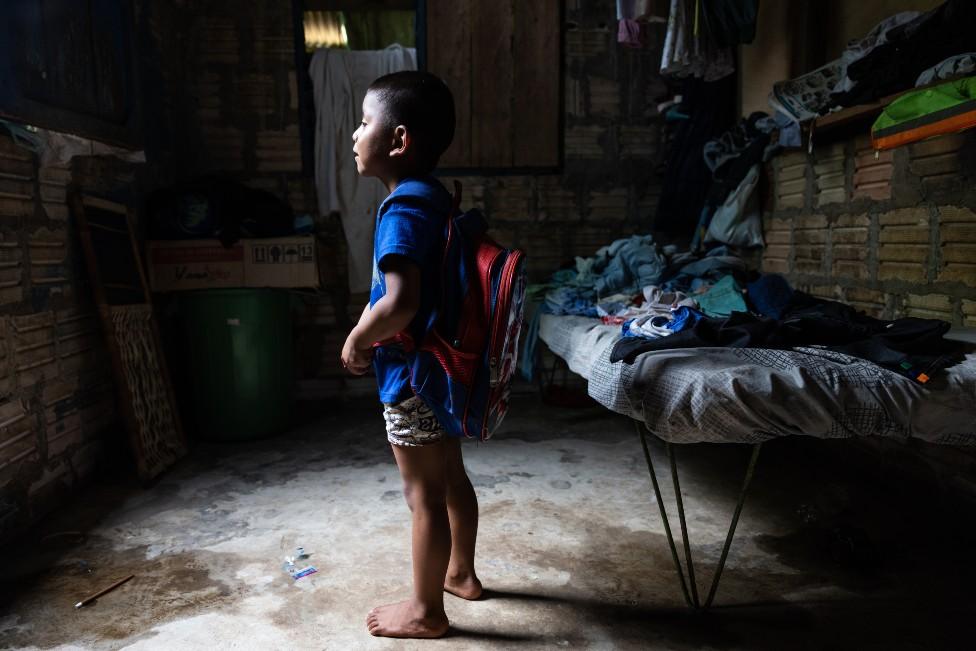
When the river is too low to go by boat, school children have to get up extra early
For Mr Rufino, a fisherman and farmer, the drought means that half of his work has evaporated. Fish have moved to deeper waters and the community struggles to water its crops, he explains.
And even when he and his fellow farmers manage to grow something, they cannot take it to market without boats.
"You lose money, because there is no way to sell anything. There's no transport," he says.
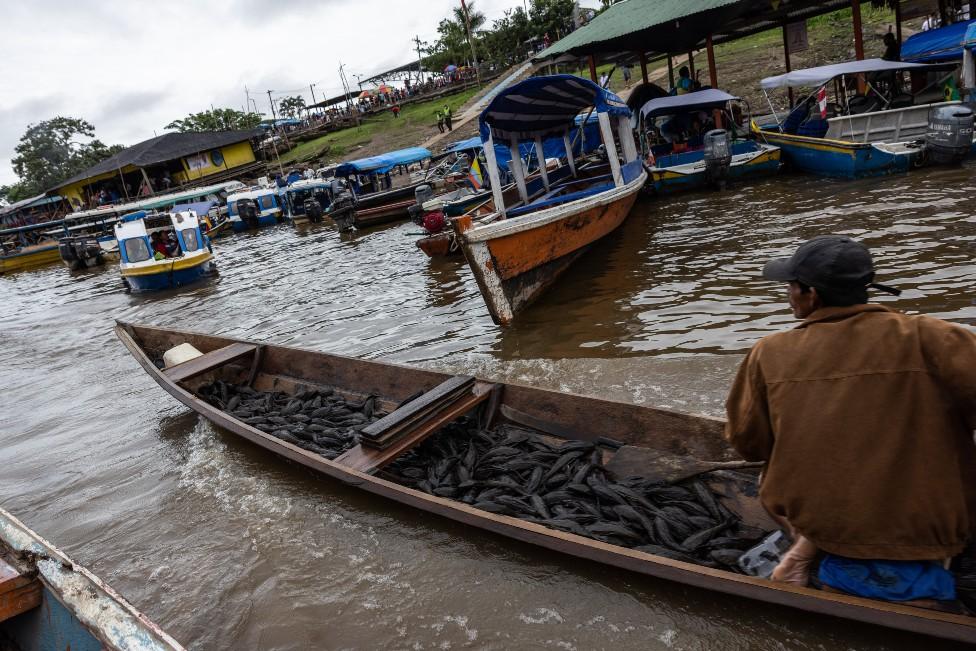
The river is key for taking goods to market
Mr Botero says that in some extreme cases he has seen livestock die due to lack of water. Wild animals that communities normally hunt for food migrate to places where water is more abundant.
He warns that food scarcity could increase further in populations that already face disproportionately high rates of malnutrition.
Indigenous communities have repeatedly sounded the alarm about the effects the drought could have on approximately 350 different ethnic groups in the region.
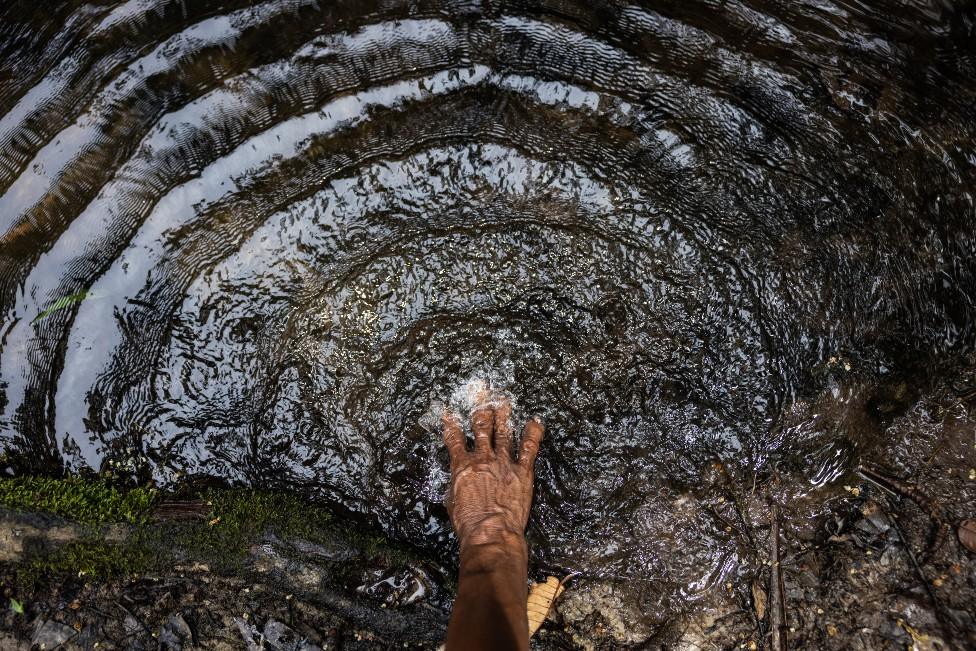
The river is the lifeblood of many communities who dwell by its banks
"We don't want any more speeches. We are facing an Amazon that's at the point of no return," the head of the Coordination of Indigenous Organizations of the Amazon Basin, José Gregorio Díaz, told a press conference recently, as United Nations leaders met to discuss the issue.
To make matters worse, large swathes of Colombia's Amazon region have been ravaged by forest fires since the beginning of the year.
While data on the fires is still not available, the country's environmental ministry published a memo in January saying they appeared to be the worst the region had experienced in a decade.
"What is happening is unheard of," says Mr Botero. "It's one of the biggest fires that I've seen in 10 years. Really, it's an apocalyptic situation."
The fear is that in long term the fires will contribute to changing climate conditions, thrusting the region into a vicious cycle of burns and drought.
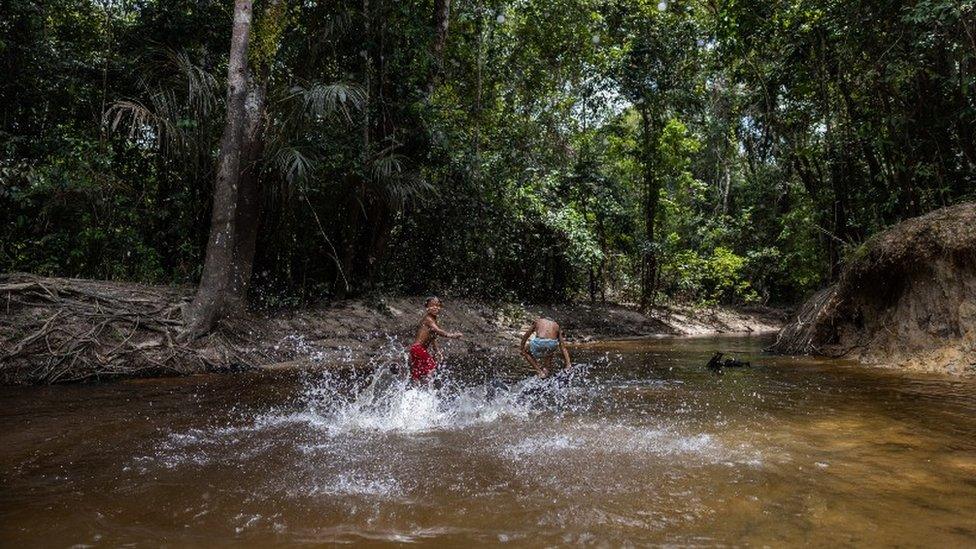
Children have been taking advantage of the low river levels to play, but the drought is causing huge problems
Back in her small community, Ms Sánchez Parente is feeding her baby in her small brick home. She says she worries about what the future may look like for her children.
"It never used to be like this," she says. "They're things that make you sad, because everything has changed so much."

You may want to watch:
A logger, an environmental policeman, a cattle rancher and an environmentalist share their views on the Amazon's future
Related topics
- Published1 September 2021
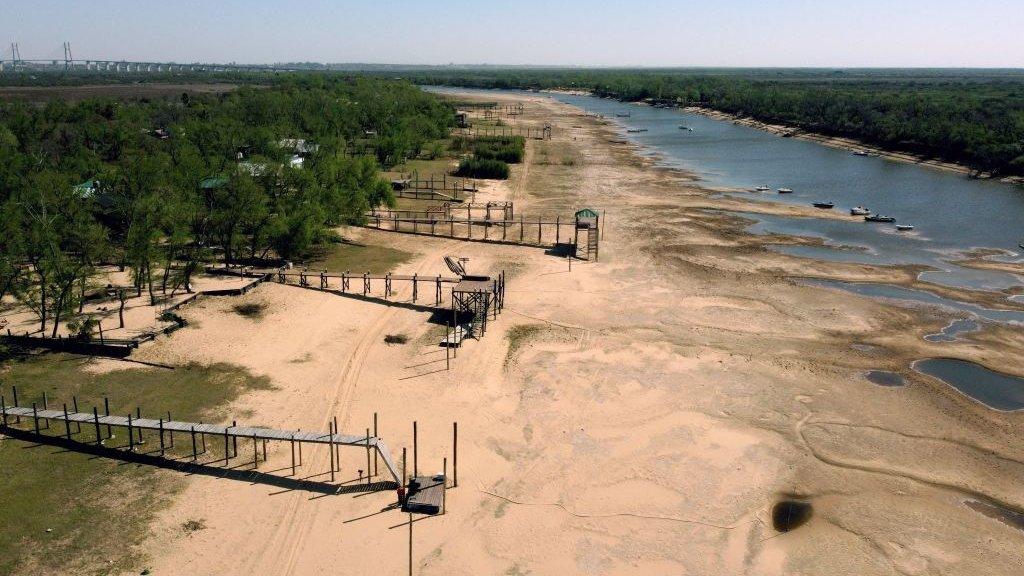
- Published11 February 2022
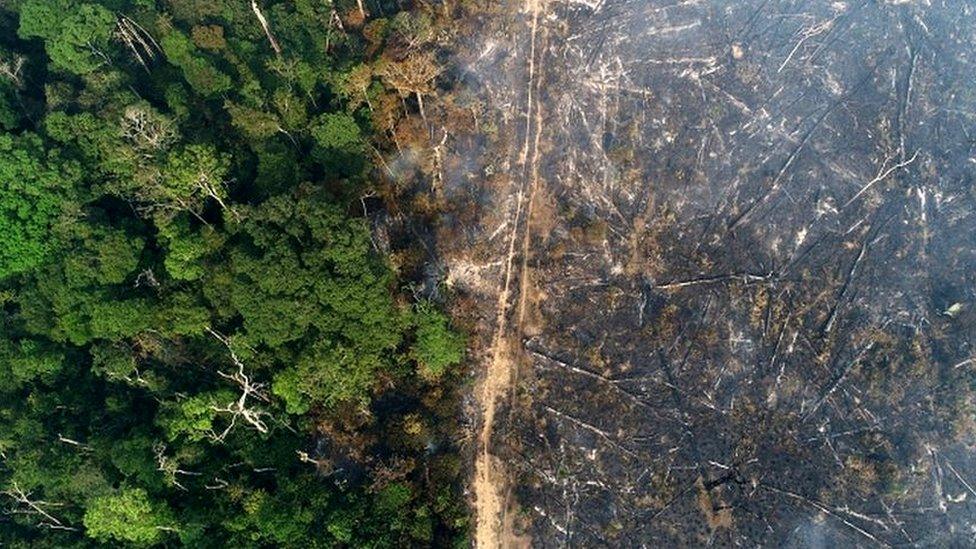
- Published8 March 2022
